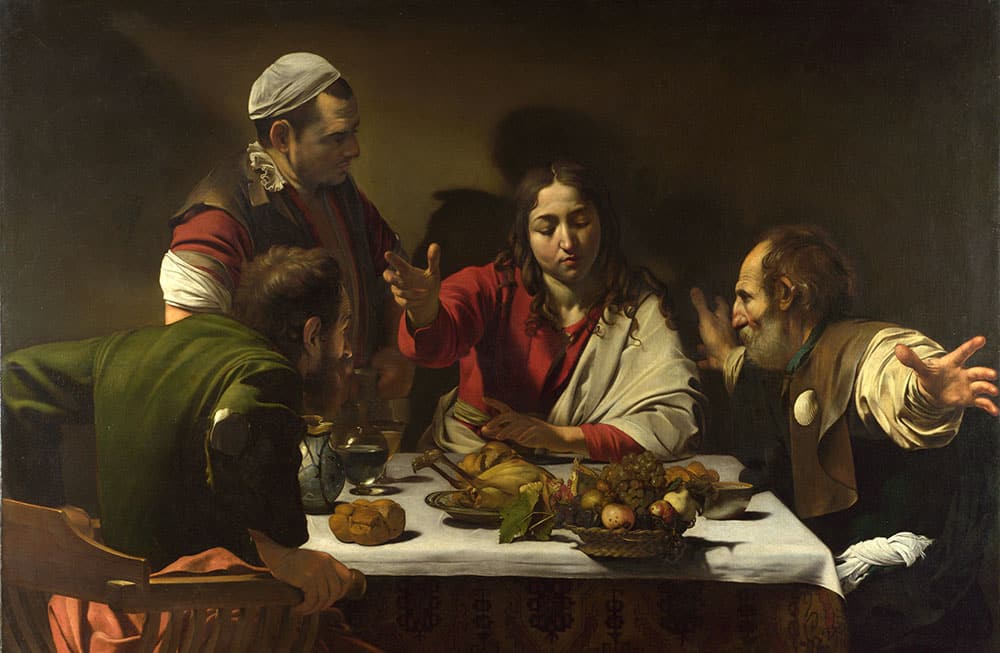Question: The Gospel on Easter Sunday mentions the burial cloths that John and Peter found in the empty tomb. The passage makes a point that the cloth around Jesus’ head was separate from the rest. The Shroud of Turin seems to be one continuous cloth that covers his whole body, including the head. Please reconcile this apparent contradiction.
— Paul VanHoudt, Erie, Colorado
Answer: The face-cloth (called the sudarium) was a separate cloth, usually of high quality, that covered the face, underneath the main burial shroud. The arms and legs, too, were often covered with a winding cloth before the main burial shroud. What we likely have at Turin is the burial shroud which, as you point out, was a long and continuous cloth, that covered the other cloths as well as the body. Hence, there is no contradiction, since it was not the only cloth covering the body of Jesus.
The sudarium is said to be in Oviedo, Spain, and has a linked history to the Shroud of Turin. Blood stains on the sudarium are in the same locations relative to the shroud. Traces of limestone dust on the sudarium are also found on the shroud and also found at the Calvary in Jerusalem, where Jesus was crucified. Faint, barely discernible facial markings on the sudarium have patterns and geometries very similar to the face imprint on the shroud. The blood type on the sudarium is AB, the same as on the shroud. AB is the rarest blood type in the world, so the fact that it is found on both is less likely to be a coincidence.
As to the biblical mentioning of the shroud and the sudarium, John presents details about them meant to highlight the curiosity of them being left behind. If grave-robbers were at work, they would surely not leave the sudarium (facecloth) behind, since it was usually an expensive linen they would want to take. But they not only leave it behind, but take time to carefully fold it! The shroud, too, might be deemed valuable, so why take the time to remove the body from it? One usually imagines grave-robbers snatching the wrapped body and any other valuables and running.
John’s Gospel gives a further clue that peaks one’s curiosity. He describes the burial shroud as “lying there.” The Greek word is keimena, meaning to lie or lie outstretched. In an extended sense, it means to be laid up, appointed, made (like a “made up” bed) or set. So, the picture is painted of cloths that had been covering the body falling right in place as the body vanished from out of them. This is likely why John’s Gospel observes that the Beloved Disciple saw this and believed. In other words, it was not merely Mary Magdalene’s story he believed, but rather that Jesus had risen, as he said he would, on the third day (see Jn 20:5-8).
Easter sequence
Question: At Easter, the lector read a poem after the second reading, and it puzzled me. It was not announced as a reading. When I asked him, he did not know but just read it because it was there in the book. Does this sound right?
— Name withheld, via email
Answer: What you likely heard was the sequence hymn, an optional text to be sung on Easter Sunday and during the week that follows. Sequence hymns were once more numerous in the Church’s liturgy and were used to cover the lengthier Gospel processions in larger cathedrals and on solemn feasts. Today there are only five left, all optional in use: Easter (Victimae Paschali Laudes), Pentecost (Veni Sancti Spiritus), Corpus Christi (Lauda Sion), Requiem (Dies Irae), and Our Lady of Sorrows (Stabat Mater).
As for the Victimae Paschali Laudes, it is a poetic rendering of the facts of the Resurrection and the theological meaning of it. In the song, Mary Magdalene testifies to seeing the empty tomb, the burial clothes and facecloth, angels testifying and her own experience of the Lord’s resurrection. The theological truths are many and tightly wound together: The Lamb has redeemed the sheep, Christ has reconciled us to the Father, death and life contend in an awesome battle and Christ stands victorious and fully alive; may Christ our hope, truly risen, have mercy on us.
As for the lector reading it, that was less than ideal. If a hymn is not sung, it is better to omit it. They were composed to be sung. It is a bit like reciting the National Anthem or reciting the song “Happy Birthday.”
Msgr. Charles Pope is the pastor of Holy Comforter-St. Cyprian in Washington, D.C., and writes for the Archdiocese of Washington, D.C. at blog.adw.org. Send questions to msgrpope@osv.com.







